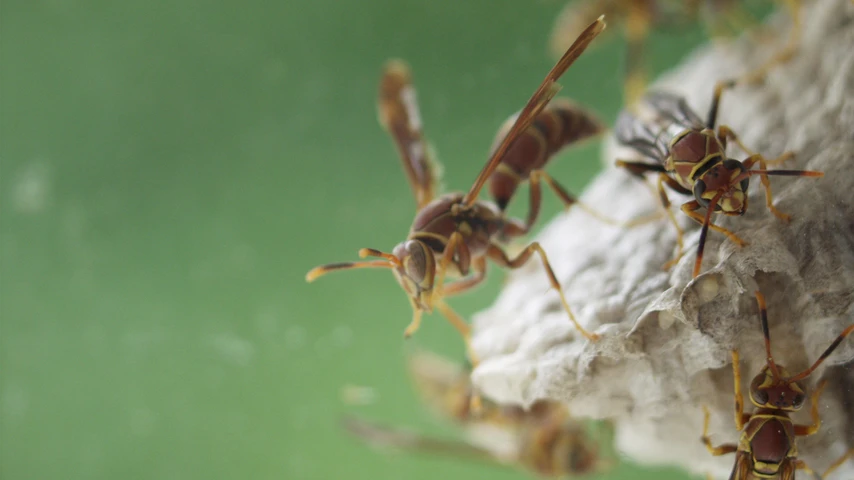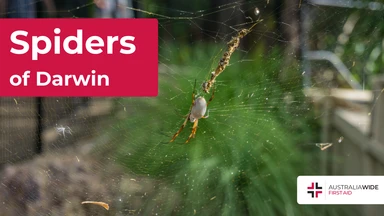A Guide to Spider Wasp Australia


Spider wasps have one of the most powerful stings among Australia's venomous insects, as it is designed to paralyse large spider species like the Funnel-web.
These long-legged insects are so named because of their nightmarish predilection for laying their eggs on spiders' bodies. The larva subsequently eats the spider after hatching.
And though they are generally non-aggressive, they have been known to wield their painful venom against humans.
In this article, we will help you become better acquainted with the Spider wasp and what to do if you are stung by one.
We also cover spider wasp and other insect stings in our first aid courses:
Head to our website to enrol at a training location near you today.
Though there are several species of spider wasps in Australia, the most commonly encountered one is the Orange spider wasp (Cryptocheilus bicolor). Orange spider wasps have the following identifying characteristics:
Orange spider wasps are often spotted hopping or walking rapidly along the ground and flicking their wings upon landing.
We run certified First Aid courses throughout all major Australia citys. Find a location near you.
Spider wasps are widely distributed throughout Australia in a variety of habitats, including:
They are solitary wasps, with females often building nest chambers in the ground that are sometimes made from mud and coated in a shiny resin.
Adult spider wasps actively feed on nectar during the summer months.
Either before or after preparing their nest chamber, female wasps will search for spiders on tree trunks or the ground. After finding a suitable spider, they will sting and paralyse it before flying or dragging it back to their nest chamber.
They will then lay a single egg on the spider's body and seal the chamber shut. Once the larva hatches, it will subsequently feed on the spider's body before pupating in a thin silky cocoon.
There are a few variations to this process depending on the spider wasp. For instance, some will bite the legs off large hairy spiders to make them easier to handle. Others will not prepare a nest chamber in which to dump the spider, but will instead allow it to be eaten where it was stung.
Regardless of the spider wasp, however, the spiders they target are large enough to allow the larva to complete its development on one host. As such, they often target Huntsman spiders, Golden orb spiders, and Funnel-web spiders.

To treat a wasp sting:
Spider wasps, of the family pompilidae, are renowned for a painful sting that they use to paralyse spiders, which they subsequently parasite with spider wasp larva.
Though they do not form colonies and are generally non-aggressive, they have been known to wield their powerful venom against humans when provoked.
Luckily, the symptoms of a Spider wasp sting can usually be treated with a cold compress and hydrocortisone cream.
For more information about managing spider wasp and other insect stings, book one of our first aid courses:
Head to the Locations page on our website to enrol in a course near you today!

March 11, 2025
Darwin, the tropical capital of Australia’s Northern Territory, is home to a rich diversity of wildlife - including an impressive array of spiders. From the sprawling webs of golden orb-weavers to the cryptic camouflage of trapdoor spiders, these arachnids play a vital role in the local ecosystem. While some may inspire fear, the majority are harmless and even beneficial, helping to control insect populations.

September 4, 2024
Cat bites, while often underestimated, can lead to serious health complications if not treated promptly and properly. Cats' mouths harbour a variety of bacteria that can cause infections in humans.

April 1, 2024
Encounters with wildlife can often be thrilling, but when it comes to the creature known as the drop bear, the experience can quickly turn dangerous. A sharp increase in recent attacks prompts the need for understanding proper first aid procedures in case of an attack.